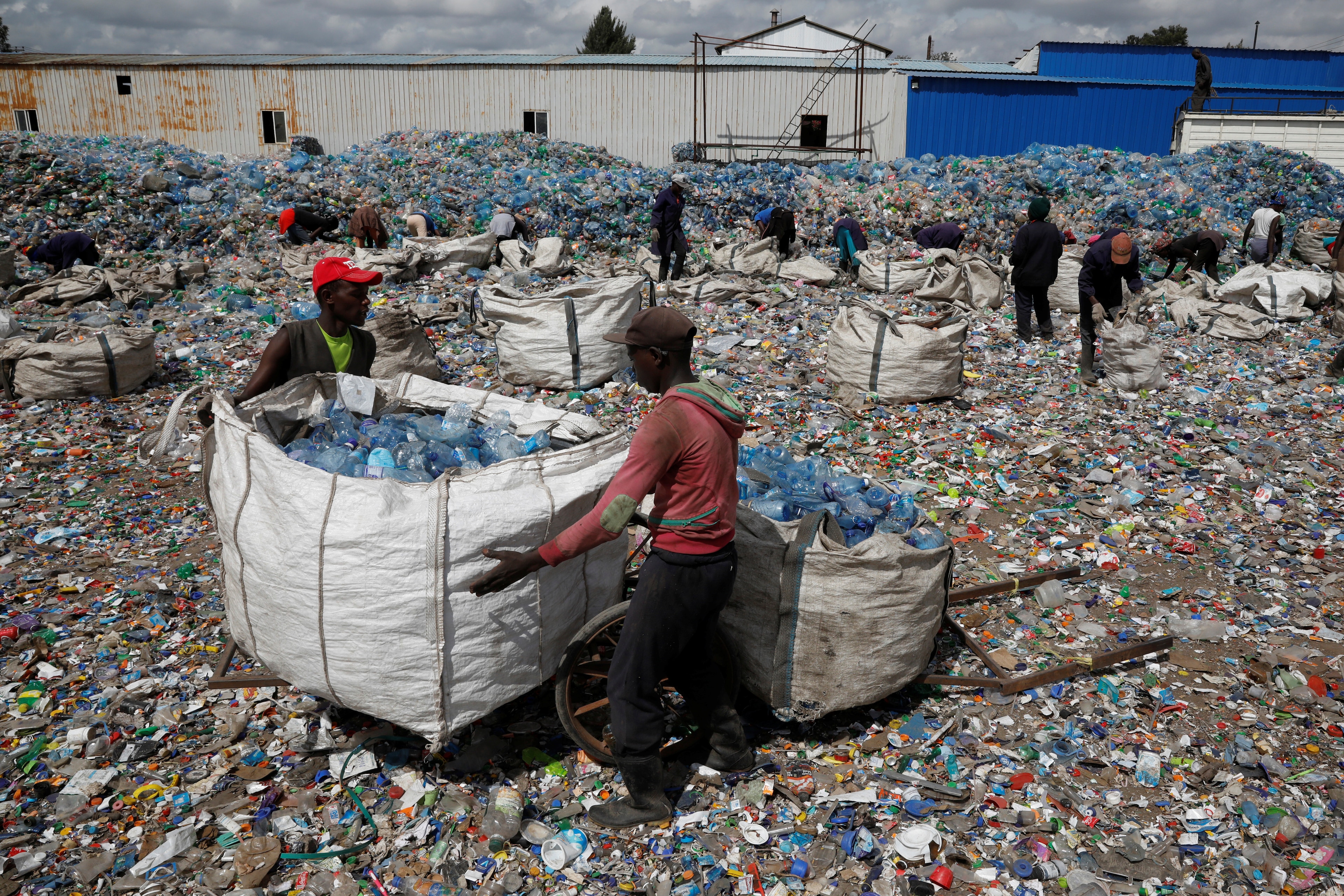High Seas Treaty: UN member states seal historic deal to protect international waters

The High Seas Treaty will create a network of protected marine areas with the aim of protecting 30% of our seas by 2030.
Image: Unsplash/Joseph Barrientos
Stay up to date:
Nature and Biodiversity
- A landmark new UN treaty to protect the ocean commits governments to boost funding for marine conservation.
- The High Seas Treaty will also create a network of protected marine areas with the aim of protecting 30% of our seas by 2030.
- The agreement provides countries with new legal tools to establish and manage protected areas in international waters.
- It is seen as a victory in the fight against climate change, biodiversity loss and pollution.
An historic treaty to protect the ocean has been agreed at the United Nations, nearly two decades after talks started to deliver a legally binding deal to protect biodiversity in waters that sit outside national boundaries.
Hailed as the High Seas Treaty, the new deal commits the vast majority of the world's governments to boosting funding for marine conservation and creating a network of marine protected areas in international waters that would enable countries to follow through with their promise, made at the COP15 UN Biodiversity Conference in December, to protect 30 percent of land and sea by 2030.
Wide-ranging new rules on how to fairly share ocean resources have also been agreed through the new treaty.
Ambassador Rena Lee of Singapore, president of the talks, announced the agreement of the text late Saturday night, bringing a grueling final negotiating session that lasted more than 36 hours to an end. "Ladies and gentlemen, the ship has reached the shore," she said.
The ocean is the world's largest carbon sink and contains 95 percent of the planet's biosphere. But a loose patchwork of weakly enforced rules governing international waters have meant most of the planet's oceans are highly susceptible to exploitation whether through over-fishing, acidification and pollution, or emerging threats such as deep water mining.
Only 1.2 percent of international waters have protected status, with just 0.8 percent identified as highly protected, according to the international Union for Conservation of Nature.
What's the World Economic Forum doing about the ocean?
The new treaty aims to remedy the low levels of protection by providing countries with new legal tools to establish and manage marine protected areas in international waters. Countries have also pledged to ensure all activities that have potential to affect ocean life are subject to an environmental impact assessment to evaluate the potential damage that could result and make such information public.
Green groups welcomed the new obligation, noting that environmental impact assessments were especially important when it comes to emerging activities such as deep seabed mining and deep-sea carbon capture and storage, where there is huge uncertainty over how environmental impacts could play out.
United Nations Secretary General Antonio Guterres said the deal, finalized after two weeks of marathon negotiations between country teams at the UN's headquarters in New York, marked a "victory for multilateralism."
Guterres said the treaty was crucial for addressing the triple planetary crisis of climate change, biodiversity loss and pollution. "It is also vital for achieving ocean-related goals and targets of the 2030 Agenda for Sustainable Development, and the Kunming-Montreal Global Biodiversity Framework," he said, referring to the so-called 30x30 pledge made at last year's COP15 Summit to protect a third of the world's land and sea for biodiversity by 2030.
Accept our marketing cookies to access this content.
These cookies are currently disabled in your browser.
Observers had warned countries would fail to meet the 30x30 target agreed in Montreal in December without new legal powers to create a network of marine protected areas on the high seas given roughly two-thirds of the ocean lies outside national jurisdictions.
The High Seas Treaty also calls for the establishment of a number of new bodies and working groups charged with governance and compliance of international marine protected area management and environmental impact assessments, and proposes an initial upfront fund for conservation.
Major sticking points during the negotiations focused on the processes for creating marine protected areas and how to ensure costs and benefits were shared equitably, with many developing countries lacking the technology or capacity to undertake scientific exploration of the high seas.
There were also intense negotiations over how to manage the trend that has seen corals, seaweeds, bacteria and other marine resources become increasingly sought after by scientists and businesses for use in beauty and medicinal products, as well as in the nascent carbon removals industry.
Campaigners broadly welcomed the treaty, and congratulated the High Ambition Coalition network of countries, which includes the U.K., U.S. and China, for playing a major role in brokering a wide-reaching compromise deal.
Accept our marketing cookies to access this content.
These cookies are currently disabled in your browser.
"This is a historic day for conservation and a sign that in a divided world, protecting nature and people can triumph over geopolitics," said Laura Mueller, an oceans campaigner for Greenpeace Nordic. "We praise countries for seeking compromises, putting aside differences and delivering a Treaty that will let us protect the oceans, build our resilience to climate change and safeguard the lives and livelihoods of billions of people."
Jessica Battle, senior global ocean governance and policy expert, said the treaty marked a turning point in governments' approach to the oceans that could result in significant economic benefits. "What happens on the high seas will no longer be 'out of sight, out of mind,'" she said. "The High Seas Treaty will allow for the kind of oversight and integration we need if we want the ocean to keep providing the social, economic and environmental benefits humanity currently enjoys. We can now look at the cumulative impacts on our ocean in a way that reflects the interconnected blue economy and the ecosystems that support it."
The agreement on the oceans comes 19 years after the U.N. first set up an ad hoc group to discuss ocean protection, eight years after it adopted a resolution to develop a legally binding oceans treaty, and five years after negotiations began in earnest.
The High Seas Treaty, which needs to be ratified by U.N. member states, will establish a new Conference of the Parties (COP), the name given to intergovernmental meetings that bring together governments that have ratified UN environmental treaties. Similar to its climate, biodiversity and deforestation equivalents, the new oceans COP will be designed to hold parties to account, monitor progress and help build a policy framework to enable high seas protection.
The EU has pledged $42.74 million to facilitate the ratification of the treaty and help ensure its quick implementation.
"High seas marine protected areas can play a critical role in building resilience to the impacts of climate change," said Liz Karan, director of the Pew Charitable Trusts' ocean governance project. "Governments and civil society must now ensure that the agreement is adopted and rapidly enters into force and is effectively implemented to safeguard high seas biodiversity."
Accept our marketing cookies to access this content.
These cookies are currently disabled in your browser.
Don't miss any update on this topic
Create a free account and access your personalized content collection with our latest publications and analyses.
License and Republishing
World Economic Forum articles may be republished in accordance with the Creative Commons Attribution-NonCommercial-NoDerivatives 4.0 International Public License, and in accordance with our Terms of Use.
The views expressed in this article are those of the author alone and not the World Economic Forum.
Forum Stories newsletter
Bringing you weekly curated insights and analysis on the global issues that matter.
More on Nature and BiodiversitySee all
Hu Xiangdong and Felipe Carazo
August 1, 2025
Andrea Willige
July 30, 2025
Tom Crowfoot
July 30, 2025
Oliver Kade and Sarah Hadley
July 28, 2025
Nasim Pour, Sebastien Cross and Joel Gould
July 28, 2025




